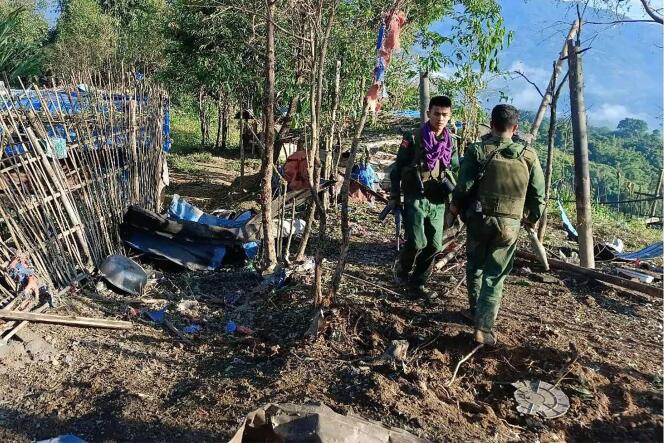The Burmese junta is losing ground in the strategic region of Kokang, located along the Chinese border, while the regional capital of Laukkai has been suffering for a week from a spectacular offensive by a trio of ethnic armies led by a rebel guerrilla.
This attack allowed, thanks to a vast movement to encircle the city, the capture of more than 90 forts and camps of the Burmese army. In the process, it cut off the two largest road transport arteries to China. The capture of Chinshwehaw, a town of 5,000 inhabitants, on October 28, had great resonance in the blogosphere of the “Burmese revolution”. The junta had to, for the first time, recognize the loss of control of three cities, but downplayed the facts: according to the army spokesperson, these unrest “happen every five years”.
The context of civil war on multiple fronts which has prevailed since the military coup of 1er February 2021, however, makes this battle an issue of a completely different dimension. Indeed, it took place at a time of weakening of the regular army and internal dissensions within the regime: “This is the most significant offensive the junta has faced since the coup. The armed groups involved were undoubtedly themselves surprised by the speed with which they were able to seize strategic locations.explains Richard Horsey, Burma specialist with the NGO International Crisis Group.
Weapons depots seized
The Myanmar National Democratic Alliance Army (MNDAA), the rebel guerrilla of the Kokang ethnic group – the latter are Han Chinese who have been established on this side of the border for centuries – broadcasts on his news feed images of arms depots seized from the Burmese army. Six armored vehicles were seized, and an entire infantry brigade, made up of 41 soldiers, capitulated on Monday October 30.
The MNDAA, made up of around 10,000 men, is the historic guerrilla force of the Kokang. She was driven out of Laukkai in 2009 after part of its ruling clans joined the Burmese army. At the end of violent fighting, 40,000 people had to flee to China. Notably, the Burmese general who won this battle was Min Aung Hlaing, the current head of the junta and the author of the putsch… This feat of arms led to his being promoted to head of the army in 2011. In 2015 , the MNDAA tried again to recapture Laukkai, without success.
This enclave experienced in illegal trafficking and controlled by a small force of Kokang border guards rallied to the Burmese army has since prospered on a new activity, the online scam centers of the Chinese mafias whose activity has exploded, favor of the pandemic, all along the Burmese border – as well as in Laos and Cambodia. Laukkai’s leaders are intimately invested in the economic and political circles of China’s Yunnan province, located across the border.
You have 55% of this article left to read. The rest is reserved for subscribers.
